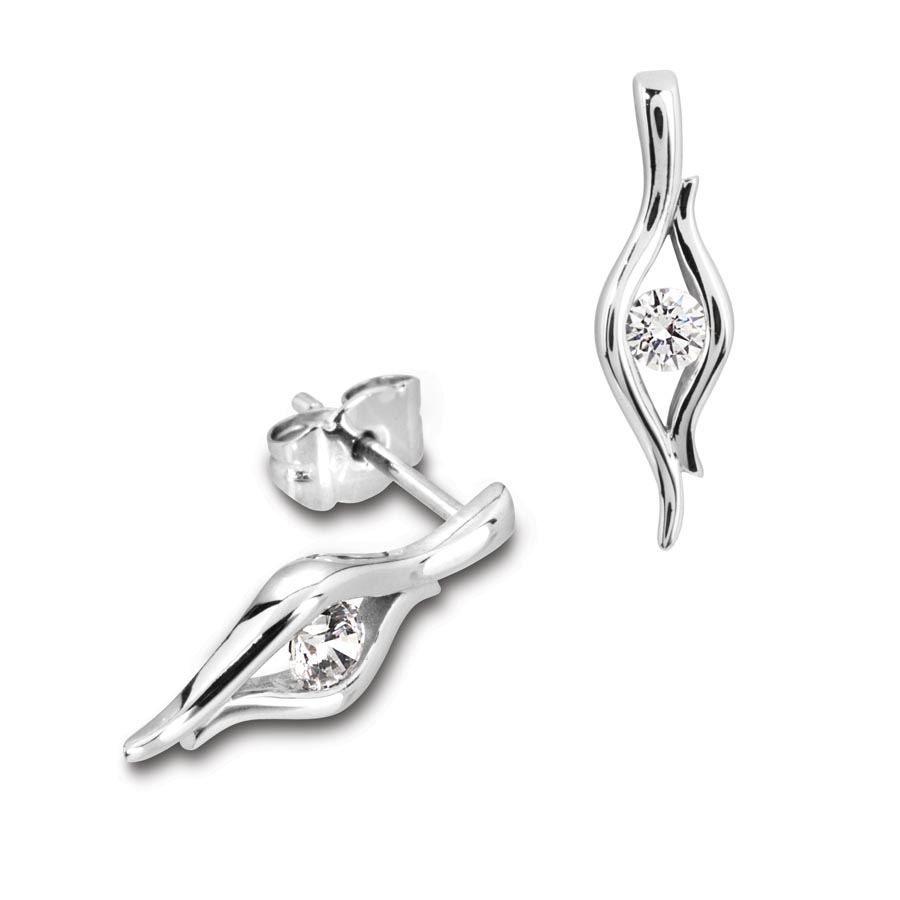Now widely referred to as a diamond grading report, a certificate is a special piece of documentation that accompanies your diamond purchase. A grading report information about your diamond’s quality and offers you the assurance that you are getting a diamond graded without bias.
How to read a grading report?
Knowing the 4Cs will help hugely in being able to interpret the information within a diamond grading report, however there are lots of other points to look out for too. Here we take you through the particulars of a diamond grading report and offer you our top tips for successful diamond shopping:
The Header
Who graded the diamond? The header will show the Lab that graded the diamond. Some of the most popular are:
GIA
The Gemological Institute of America
HRD
Hoge Raad voor Diamant or known in English as The Diamond High Council
IGI
The International Gemological Institute
IGL
The International Gemological Laboratory
The Report Number
The report number is a unique number assigned to the individually graded diamond upon which the report is based. Diamond grading laboratories retain this unique number in their database and most laboratories offer an online report check via their website. This enables you to verify the authenticity of the report and save a pdf copy for your own records too.
Shape & Cutting Style
This refers to the shape and cut of the diamond. Terminology may vary from laboratory to laboratory however, generally this section provides a basic visual description of the diamond. Shape describes a diamond’s basic outline when viewed face up (round, pear, oval, square etc.).
Cutting style, refers to how the diamond’s facets are arranged. This is important to delineate as not all diamonds that are of a certain shape will have the same cutting style.
Measurements
This section is pretty self explanatory, this outlines the length, width and depth of the diamond.
This however is a very important detail to be be noted. It is important to make sure that your diamond measures correctly for it’s carat weight.
Carat Weight
This details the weight of the diamond. A 1 Carat Diamond equals 200 milligrams /0.2 grams. Closely compare this to the measurements so that you can be sure that you are getting a well measured diamond.
Colour Grade:
This sections tells you the least amount of colour that is in your diamond.
Rated from D to Z.
Clarity
The clarity grade evaluates how clean a diamond is from both blemishes and inclusions.
Rated from Flawless to I3.
Polish
This grade tells you how beautifully a diamond has been finished as part of the brillianteering process.
A well-polished diamond can produce undistorted light transmission and crisp reflections.
Rated from Excellent to Poor.
Symmetry
This grade tells you how beautiful the outline of the diamond is as well as how perfectly the facets have been created.
Rated from excellent to Poor.
Fluorescence
This measures the diamond’s reaction when exposed under long wave ultraviolet light. Typically rated from none, faint, medium, strong and very strong. Many grading reports will list the colour of the fluorescence. In more than 95% of diamonds that exhibit fluorescence, the colour seen will be blue.
Rarely white, yellow and other colours may be seen.
Inscriptions
This section lists micro-laser inscriptions on a diamond.
Comments:
Additional details are often listed here to help with identification and clarity characteristics not required to be plotted on the reference diagram.
Proportions:
The proportions diagram outlines the technical measurements for the cut of the stone. Depth percentage refers to the percent of the depth of the Diamond, table to culet, relative to the width of the stone.
The Table of a Diamond refers to its largest facet, the main part of the Diamond you look at when the stone is face-up.
Table percent refers to the table size as a percentage of the Diamond’s average width.
These ratios help determine how “well” the Diamond has been cut
Clarity Characteristics / Plot Diagrams:
The plotting diagram features two views of your diamond: the crown view (from the top) and pavilion view (from the bottom). The diagram plots out the diamond’s external blemishes and internal inclusions. Unless the diamond is flawless, no two plots will look the same. It is important to take note of the type, scale and location of the inclusions. Some consumers may disregard a diamond simply because the plot may look messy, however sometimes a messy looking plot can be better than one that looks quite clean. Lots of clean looking plots may have an undesirable type of inclusion in an undesirable location.
Security Features:
Always inspect the documentation for security features as they can help prove the authenticity of the document. Typically, these security marks come in the form of a hologram, a universal product code or an embossed stamp
Top Tips:
-
- If you are in any way unsure about the quality of a diamond, ask as many questions as you can and
don’t be shy in asking your sales consultant to walk you through the details of the grading report.
Most will be perfectly happy to do so. - Knowing what you are looking at and understanding the all important 4cs will help you feel empowered to find the perfect diamond ring for you.
- Always remember that you are buying the diamond and not the grading report.
- If you are in any way unsure about the quality of a diamond, ask as many questions as you can and






